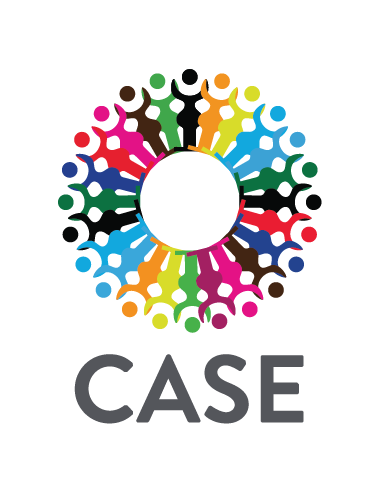“R” is for “Reading” - Part 2
A selected word list from the 1947 novel, Mrs. Mike
This blog is part of a very special series created and written by Phyllis Knox, “Alphabetic Musings”, whereby she chooses a word starting with a particular letter from the alphabet and injects it with her storytelling magic.
If you’re a reader, you probably love words. And if you’ve read books written in different historical periods, even books that were written only a few decades ago, you’ll have an acute sense that language evolves. Words and their meanings evolve; some words are created while others die away, and this is constantly happening – think of Oxford’s or Merriam’s “Word of the Year.” Languages change to incorporate new words and let others fall into disuse to reflect our changing societies; words evolve to better reflect our changing philosophies, technologies, priorities, and sensitivities. Words and how we use them even reflect our geography, with speakers of English in Quebec using language slightly differently from elsewhere in Canada, for example, due to the proximity to and constant interaction with the French-speaking world. But that’s a topic for another day.
Phyllis put together a list of words from Mrs. Mike, the novel written in 1947 and intimately related to her great-aunt, Mary Katherine, a tale Phyllis told in the previous post. Some of these words have fallen into disuse for various reasons, such as words which reference events that have lost relevance today – references to the Boer War just aren’t current, for example. Other words reflect outdated views of race laced with misunderstanding or prejudice, and have thankfully since been replaced with more inclusive and/or accurate terms. Take a look below at the Phyllis’ list and comments. – Julie Miller, one of the MCQ Voices blog editors.
Breed: A word expressing a group of people who are ‘part white and part Indian’ (this word, or the word “half-breed”, are today considered offensive. Today, the use of Métis is used where appropriate; in other cases, terms like biracial or multiracial have been widely used and accepted, beginning in the 1970s.)
Boer War: “In October 1899, the tensions between Dutch South Africans, known as Boers, and British South Africans erupted into open warfare. The government of Canada eventually responded to the crisis by recruiting, equipping and transporting two contingents of volunteers to serve with the British forces in South Africa.” The book Mrs. Mike makes mention of the Irish who went to that war and who afterwards return to the Boer War in their imaginations and get drunk on liquor (example: The curse of the Irish: Mr. Flaherty was “a drinking man”) during those occasions of extreme fear...270 young Canadian men (boys really) died during the course of that war. Note: this war is now referred to as the South African War – see the Canadian Encyclopedia.
Chinook: From the Canadian Encyclopedia: “Chinook winds or simply, Chinooks, are two types of prevailing warm, generally westerly winds in western North America: Coastal Chinooks are persistent seasonal, wet, south-westerly winds blowing in from the ocean….It is thought to have originated among the northwest Coast ‘Indians’...(First Nations), especially the Chinook and the Nootka peoples.” A noun or a verb
Coon: A raccoon (North American); a hundred years ago, the word was simply a short version of raccoon… people would say a coon coat or a coon hat. It was unfortunately also an extremely disparaging racial slur used chiefly in the Southern US to refer to an African American individual; this term is considered highly offensive today. For more on the history of this damaging racial slur, read the article on the site of the Jim Crow Museum.
Eskimo(s): “Often offensive, refers to a group of Indigenous peoples of southwestern and northern Alaska, Geenland (the world’s largest island), eastern Siberia, and especially in former use Arctic Canada….it is a colonial name imposed by non-indigenous people.” Today, the real Mrs. Mike herself – my great-aunt – I am certain – would have used the word ‘Inuit’ in writing about that particular group of ‘Aboriginal’ or ‘First Peoples’ living in The Great White North, as we call it today.
Fiends: Sinners who lived in volcanoes (from Irish superstition)
Flapjacks: Pancakes
Hands: Helpers/workers
Her fancy: Her likes, her whims
Indian: “A member of any of the indigenous peoples of North, Central and South America, especially those of North America.” Katherine Mary O’Fallon would have arrived in Alberta and would have quite naturally used the term ‘Indian’ in her everyday speech and later, in her story and in her film. At the turn of the 20th century, people would have been comfortable with the term. Today, the word “Indian” is still around, but the terms “Indigenous Peoples” or less often “Aboriginal Peoples” are the correct or accepted terms used in Canada today.
Mackinaws: Pants
Meyoonootin: Fair winds
Mounties: Mounted Police
Redcoats: RCMP officers’ uniforms were red, and still are.
Hudson’s Bay Company (HBC): the four-striped (green, red, yellow, and black) Hudson’s Bay (Company) blanket is mentioned in the book and the film. The Hudson’s Bay Company is a Canadian iconic symbol which is recognized around the world. It was “chartered 2 May 1670 and is the oldest incorporated joint-stock company in the English-speaking world.” In Katherine Mary’s day in what came to be called Alberta, HBC was above all still a fur trading business... beaver pelts are mentioned in her novel! Opinion: She (and everyone else in the Territory) could not have survived without those furs, for sure, EH! Today, we shun the killing of wild animals or the farming of animals for their fur, but try surviving up in the Arctic Circle without that fur a hundred years ago!

